Florida is a popular vacation destination best known for its amusement parks and beach resorts, but the state also has diverse and unique national parks. If you want to experience the beauty and diversity of nature, the national parks in Florida are where you should go.
There’s plenty to do in Florida’s national parks, from exploring the fort in Dry Tortugas National Park to discovering the secrets of the ecosystem of Everglades National Park. The three main national parks in Florida are Everglades National Park, Dry Tortugas National Park and Biscayne National Park. In addition to these Florida national parks, there are also national seashores, national preserves and national monuments to tick off your list.
Also read:
- 20 Landmarks In Florida
- 20 Landmarks In Miami
- 20 Things To Do In Miami At Night
- 20 Florida Keys Beaches
- 20 Ways To Spend Christmas In Florida
- 11 Florida National Parks
- 20 Things To Do In Fort Myers
- Swimming With Manatees In Florida
- 20 Things To Do In Ruskin
- 20 Day Trips From Miami
- 20 Day Trips From Orlando
- 20 Museums in Florida
- 20 Things To Do in Tampa
- 20 Things To Do In Cocoa Beach
- 20 State Parks in Florida
- 20 Places For The Best Snorkeling In Florida
- 20 Florida Keys State Parks
- Where To Stay In Miami
- 20 Things To Do In Fort Walton Beach
- 15 Things Florida is Famous For
- 15 Things Miami is Famous For
- 20 Things To Do In Treasure Island, Florida
- 20 Things To Do In Cape Canaveral
- 20 Places To Go Glamping In Florida
- 20 Things To Do In Jacksonville
- 20 Florida Islands
- 20 Things To Do In Cape Coral
- 20 Things To Do In Tallahassee
- 20 Things To Do In Anna Maria Island
- 20 Things To Do In Port St Lucie
- 20 Things To Do In St Augustine At Night
- 20 Things To Do In Gainesville
- 20 Cities in Florida
- 20 Orlando Museums
- 20 Things To Do In Clewiston, Florida
- 20 Things To Do In St Petersburg
- 20 Things To Do In Sarasota
- 20 Things To Do In Neptune Beach
- 20 Things To Do In Jupiter
- 20 Things In Tampa At Night
- 20 Things To Do In Navarre Beach
Contents
11 National Parks In Florida
National Parks In Florida
1- Biscayne National Park
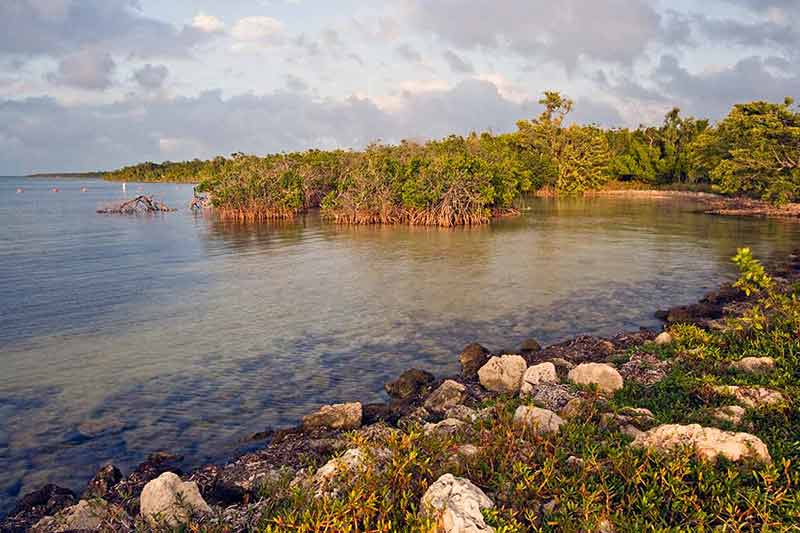
At 172,971 acres (69,700 ha), Biscayne National Park in Homestead is the largest marine sanctuary in the United States.
The park is unique in that it is almost entirely submerged, providing unparalleled aquatic experiences.
Biscayne National Park supports a diverse range of wildlife, including endangered species such as the Schaus swallowtail butterfly, smalltooth sawfish, manatees, green and hawksbill sea turtles, and the American crocodile.
More than 100 bird species, including pelagic birds, 200 fish species, soft and hard coral, and even whales, can be found in the park.
Things To Do
- Snorkelling
Because the park is mainly underwater, go snorkelling to admire coral reefs and shipwrecks.
- Paddlesports
Paddleboarding, canoeing and kayaking are excellent ways to explore the park’s stunning mangrove shorelines and shallow bay. In addition, you can see more of the islands by taking guided boat tours.
- Camping
The park has two campgrounds, which are only accessible by boat, on Boca Chita and Elliott Keys islands.
How To Get To The Park
The closest city to the park, Homestead, has a free trolley that runs into the park’s Dante Fascell Visitor Center and the Homestead Bayfront Marina.
2- Dry Tortugas National Park
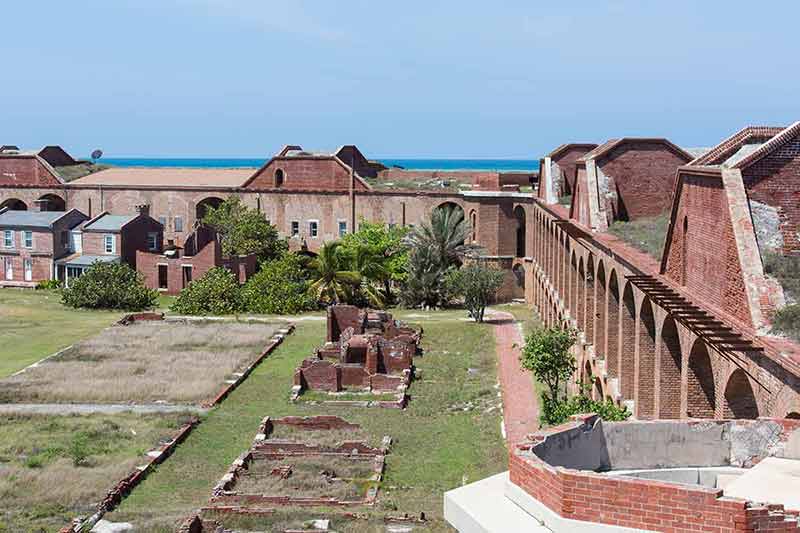
Dry Tortugas National Park consists of seven small islands off the coast of Key West and is a hidden gem that you can only reach by boat or seaplane.
The 64,701-acre (26,183-ha) park consists mainly of open water, with seven islands rising above the sea.
The park was established in 1935 to protect the island and marine ecosystems of the Dry Tortugas, and it is home to the picturesque Garden Key Lighthouse and the magnificent 19th-century Fort Jefferson.
Things To Do
- Visit Fort Jefferson
Fort Jefferson is on Garden Key, the second largest island in the Dry Tortugas. The fort was built with over 16 million bricks and offers beautiful views of the calm waters.
- Birdwatching
One of the best nature activities is to go bird watching and due to the diversity of bird species.
There are over 300 bird species that hang out on the islands and they also serve as a stopover for migrating birds.
- Snorkelling
The park’s crystal clear waters offer some of the best snorkelling experiences in the country, as it is home to some of the most vibrant coral reefs and marine life.
How To Get To The Park
You can reach the remote Dry Tortugas National Park by seaplane, charter boats, private boats or ferry. The ferry journey is about three hours each way.
3- Everglades National Park
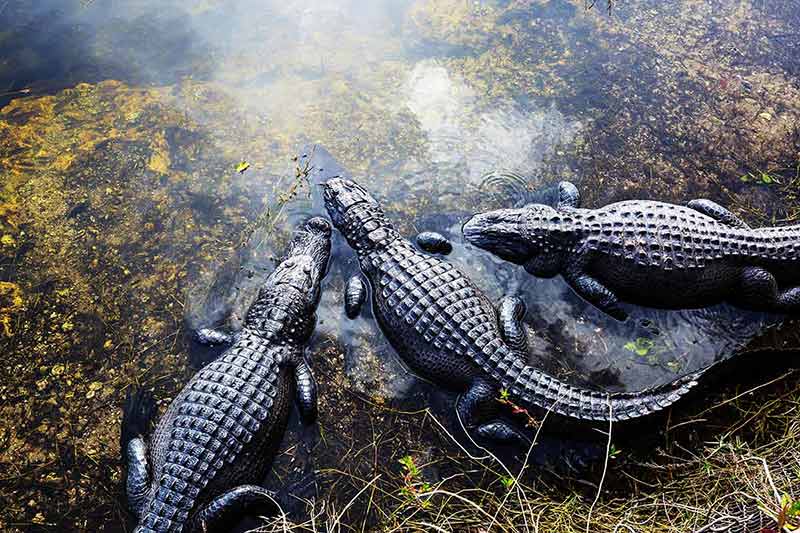
Everglades National Park is about 50 miles (80 km) southwest of Miami, making it one of the most accessible national parks in Florida.
The national park is the largest subtropical wilderness in the United States, at 1.5 million acres (610,660 ha), and is an International Biosphere Reserve.
Created in 1934 to protect an unspoilt landscape of swamps, marshes, tall grass plains and mangroves, the park has been recognised as a Wetland of International Importance and a World Heritage Site.
Everglades National Park has one of the most diverse ecosystems globally, and it is home to rare and endangered species like the American crocodile, Florida panther and West Indian manatee.
Things to Do
- Bicycling
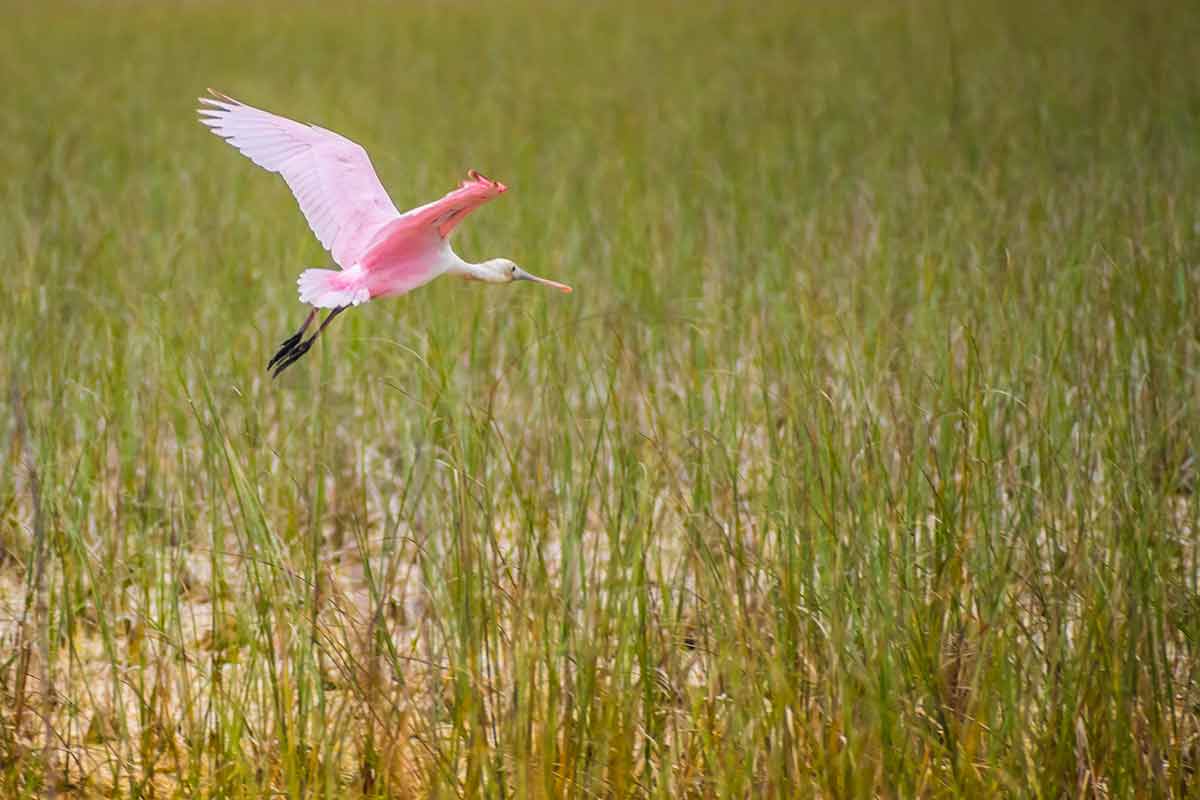
Bike trails wind through tropical hardwood forests, coastal prairie, and pine forests, providing excellent wildlife viewing and birdwatching opportunities.
- Boating
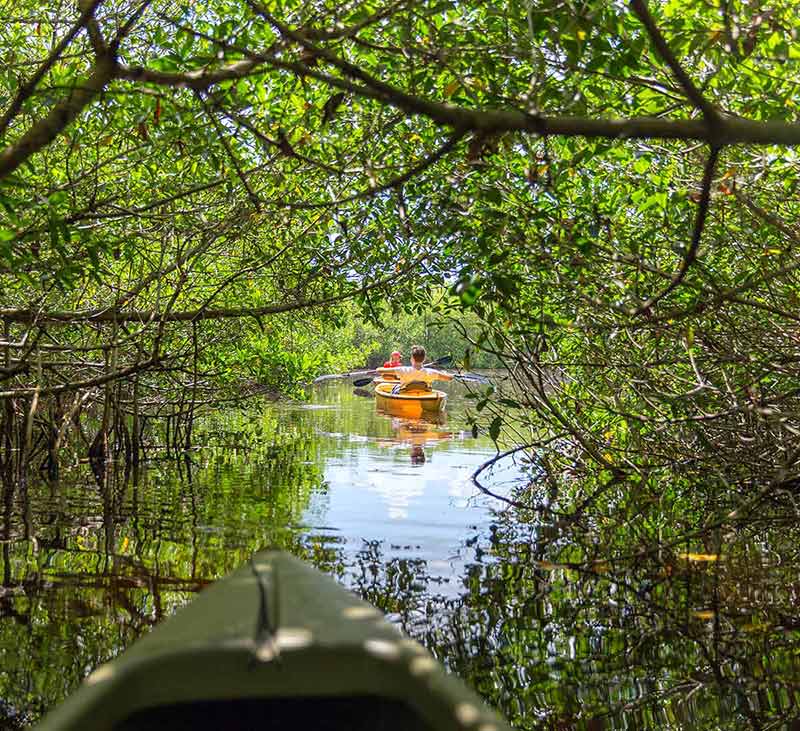
Boating is another excellent way to explore the wetlands of the Everglades. Several companies provide boat tours through the water trails, and you may even see some alligators. Other ways of exploring the waters are kayaking and canoeing.
- Camping
You can go camping at two developed campgrounds, Long Pine Key or Flamingo, and there are also primitive and beach campgrounds available in the park.
Other activities in the park include fishing, slough slogging, hiking, birdwatching and wildlife viewing.
How To Get To The Park
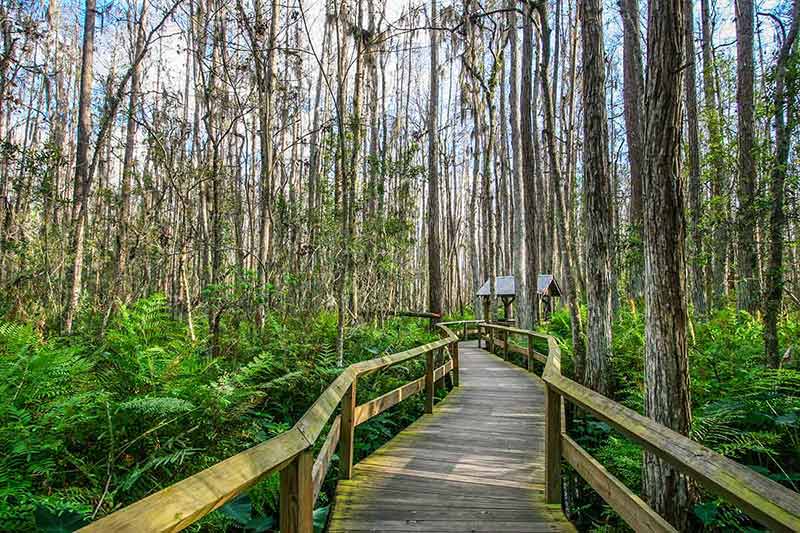
The park’s main headquarters is the Ernest F. Coe Visitor Center. Take the Florida Turnpike (Route 821) to U.S. 1 in Florida City, then to Palm Drive (State Road 9336/SW 344th St.) and follow the signs to the park.
National Preserves and National Seashores
4- Big Cypress National Preserve
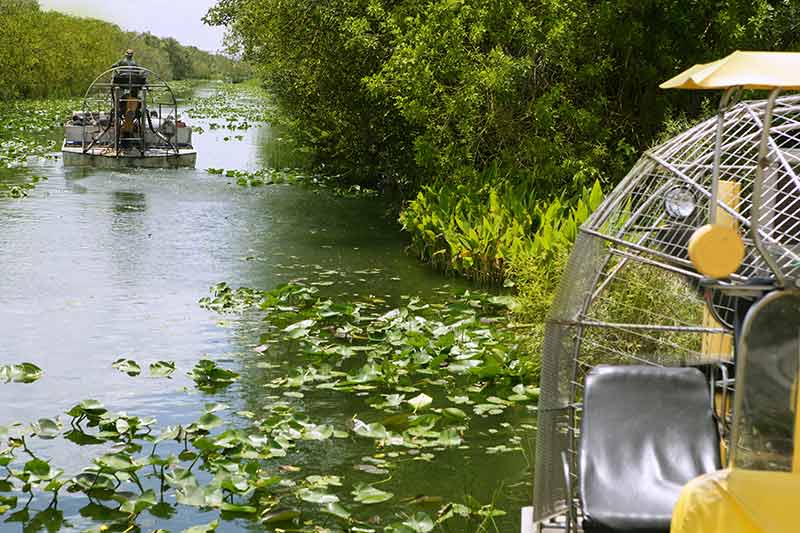
Big Cypress National Preserve is a national park in southern Florida, west of Miami, spread over 720,000 acres (291,374 ha).
This national park in Florida was established in 1974 as the country’s first national preserve to protect the vast Big Cypress Swamp.
About a million visitors a year head here to see the preserve’s natural landscapes and habitats, such as cypress swamps, grasslands, pinelands, hardwood hammocks and a mangrove estuary.
The preserve protects various plants and wildlife, including endangered species such as Florida panthers, wood storks, and red-cockaded woodpeckers.
Rare orchids, ferns, and bromeliads can also be found here.
Things to Do
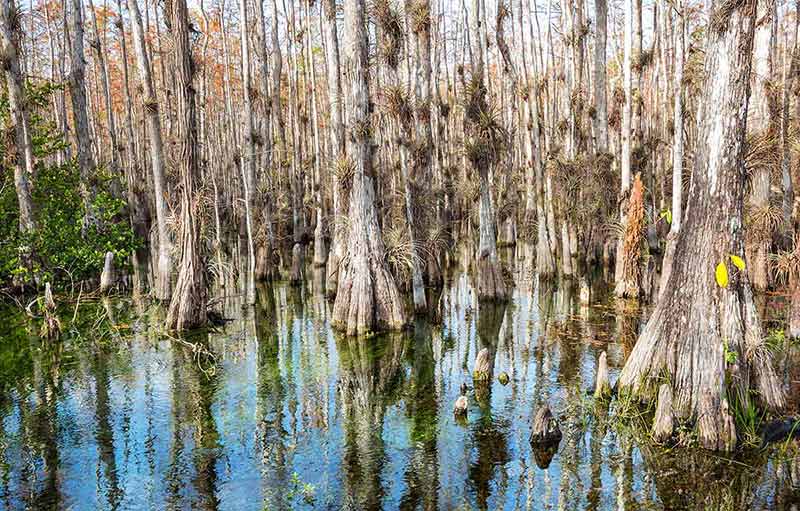
- Stargazing
Big Cypress National Preserve is an International Dark Sky Site, where the night’s sky is filled with thousands of stars you can see with your naked eye.
- Explore the swamp
Take ranger-led swamp hikes or canoe and kayak trips to discover the swamp’s secrets from the water.
Licenced commercial service providers also conduct swamp buggy, airboat and flatboat tours.
- Camping
There are eight campgrounds in the park, with over 100 campsites to choose from and backcountry camping options.
- Birdwatching
The park also has hundreds of different bird species, making it an excellent location for birdwatching.
How To Get To The Park
You can get to the Big Cypress from Miami or Naples. The park is near Tamiami Trail East and I-75 in southern Florida. The two visitor centres of the park are located along Tamiami Trail East.
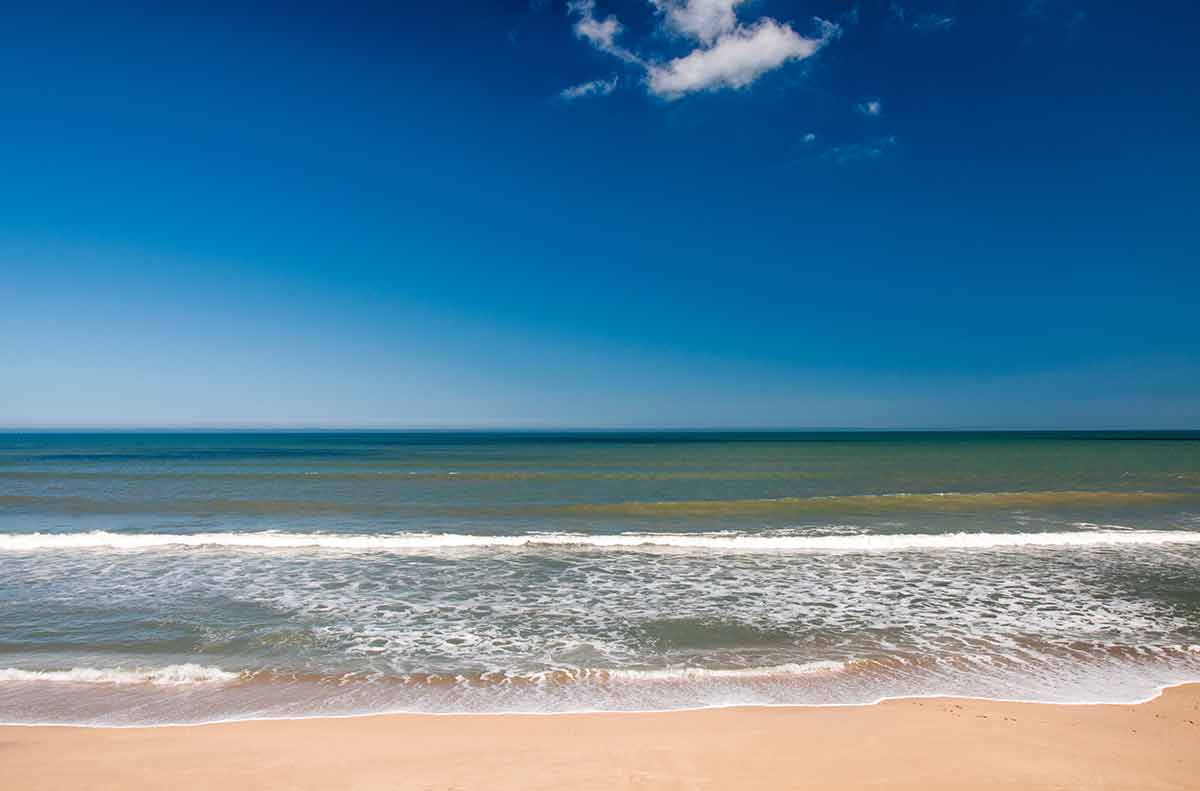
Canaveral National Seashore is a 58,000-acre (23,472-ha) national park along Florida’s east coast, located between New Smyrna Beach and Titusville.
It has nearly 24 miles (39 km) of undeveloped coastline, making it one of the longest in the United States.
The park has a variety of habitats – including barrier islands, open lagoons, pine flatwoods and coastal hammocks – that are home to a diversity of plants and animals.
Among the threatened and endangered species found here are the manatee, southern bald eagle, wood stork, peregrine falcon, right whale, and various sea turtle species.
Mosquito Lagoon is a biodiverse area that is a breeding and nesting ground for numerous aquatic species.
Things to Do
- Castle Windy Trail
This easy trail winds its way through a coastal hammock forest. At the end of the trail, there is a secluded beach with a Timucuan shell midden.
- Rocket Launch Viewing
Canaveral National Seashore is one of the best places to watch rocket launches, as it is close to the Kennedy Space Center (KSC) and the Cape Canaveral Space Force Station (CCSFS).
Other popular activities at the seashore include canoeing, kayaking, surfing, sunbathing, fishing, hunting, swimming, birdwatching, and camping.
How To Get To The Park
The Canaveral National Seashore is accessible from the northern Apollo and New Smyrna beaches and the southern Playalinda Beach.
6- Gulf Islands National Seashore
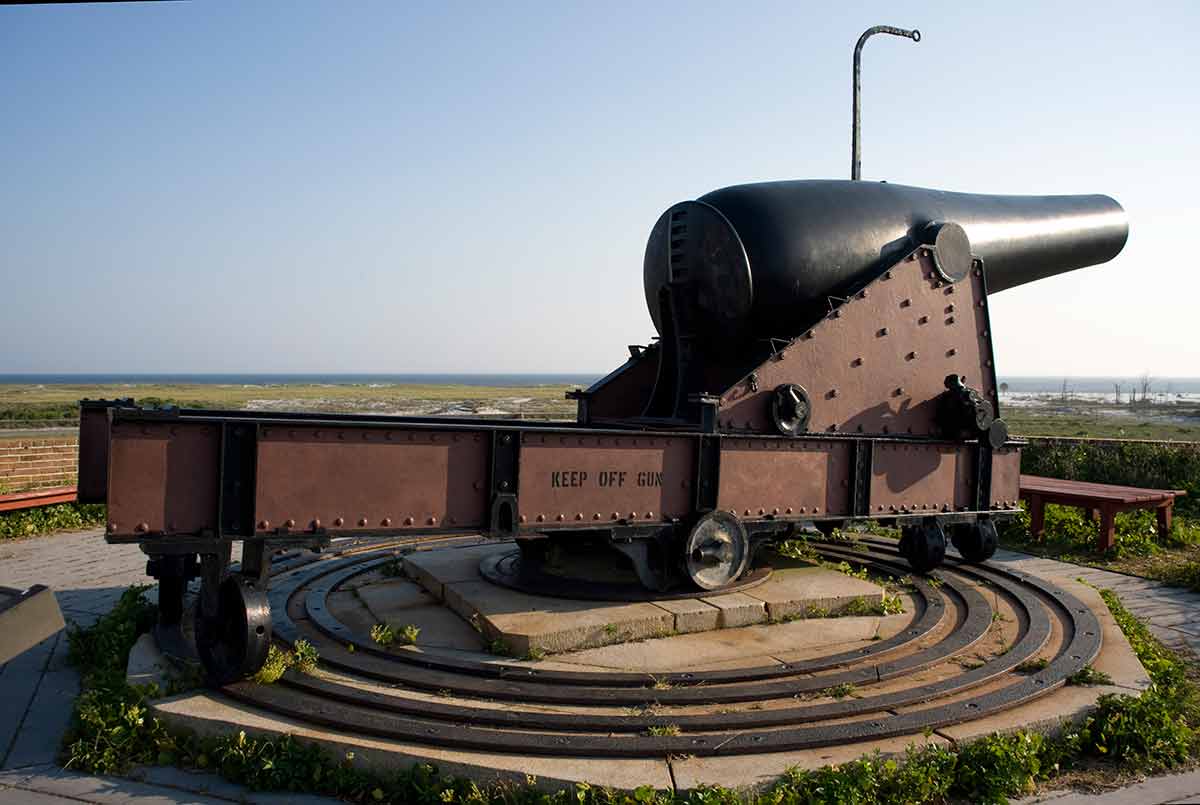
Gulf Islands National Seashore is on the Gulf Coast, straddling Florida and southern Mississippi.
This 135,457-acre (55,000-ha) national park protects barrier islands, beautiful white beaches, lush coastal wetlands and historical landscapes.
Millions of visitors come to the nation’s most extensive national seashore to relax on the white sand next to the ocean or to enjoy the many recreational opportunities.
The wetlands are a treasure trove of plants and animals, such as bottlenose dolphins, sea turtles and jellyfish.
Things to Do
- Birdwatching
The diverse ecosystems of the national seashore attract a wide variety of birdlife, with over 200 bird species identified within the park.
Skimmers, pelicans, great blue herons, and snowy plovers are just a few common species.
- Hiking
Hiking by the beach and exploring the islands is another great way to enjoy the park.
Several developed hiking trails take you through coastal forests, wooded areas and past historic forts.
- Swimming
In summer, go swimming and snorkelling in the clear water along the shoreline of the Gulf.
There are four lifeguard swimming areas with picnic tables, showers, restrooms, and changing rooms.
Other recreational activities available at the seashore include camping, fishing, hunting, snorkelling, wildlife viewing, biking, and boating.
How To Get To The Park
Reach the Gulf Islands National Seashore by taking U.S. Route 98 or Florida State Road 281.
7- Timucuan Ecological & Historic Preserve
Timucuan Ecological and Historic Preserve protects one of the few undeveloped coastal wetlands on the Atlantic Coast.
The 46,000-acre (18,615 ha) is home to a diverse range of plants and wildlife.
The Timucuan Preserve includes the estuary that runs along the rivers and creeks feeding the St. John’s River basin.
Also protected here is a range of historic and cultural sites which has exhibits that whisk you through the centuries from the time of the Timucuans to the present day.
Things to Do
- Fort Caroline
Tour Fort Caroline and learn about the relationship between the Timucuans, French explorers and Spanish colonists.
- Kingsley Plantation
The Kingsley Plantation, built in 1798, depicts the daily life of the enslaved people of African descent who worked for the plantation’s owner, Zephaniah Kingsley, as he sought to build his fortune.
- Theodore Roosevelt Area
This is a 600-acre (243-ha) natural gem that contains ecosystems of pine flatwoods, hardwood hammocks, and marshy wetlands.
This area has a rich cultural heritage to discover and excellent hiking trails with spectacular views.
How To Get To The Park
You can get to the park from major roads and highways in Jacksonville, FL, and from the St. Johns River on a ferry.
National Monuments and Memorials
8- Castillo de San Marcos National Monument
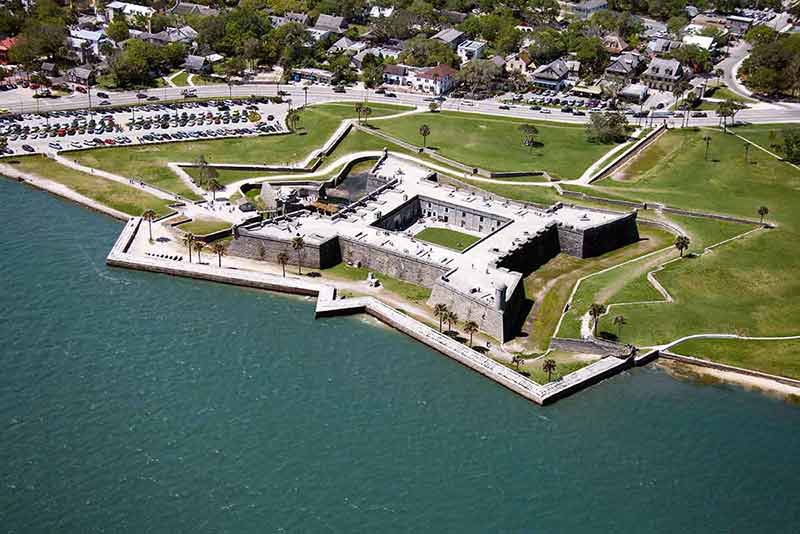
The historic Castillo de San Marcos fort is housed in the 20-acre (8-ha) Castillo de San Marcos National Monument in downtown St. Augustine.
The Spanish built the fort between 1672 and 1695 to protect Florida and the Atlantic trade route from the British and pirates.
It was later passed down to the British and then to the Americans, and it was essential during the Civil and Spanish–American wars.
The fort is the country’s oldest masonry fort and the only surviving 17th-century fort.
Castillo de San Marcos is one of two forts in the world made of coquina, a naturally occurring limestone composed of shell fragments that have proven to be resistant to cannon fire.
Things to Do
- Explore the Fort
Explore the unique masonry of the fort while viewing the exhibits. Brochures, maps, and even a park app are available on site for a self-guided tour.
- Engage with Park Rangers
Park Rangers give interpretive talks about the lives and experiences of the Europeans who lived here.
Regular historical reenactments in period dress and historical weapon displays take you back into history.
How To Get To The Park
Castillo of San Marcos is easily accessible from Interstate 95, about a 5-mile (8-km) drive.
9- De Soto National Memorial
De Soto National Memorial is a 26-acre (10-ha) park near Bradenton on Florida’s western coast.
The memorial commemorates the landing of Spanish explorer Hernando de Soto, who led the first organised European expedition to what is now southern USA.
In May 1539, Hernando de Soto and his army landed in Tampa Bay, following King Charles V’s orders to find gold and conquer new territories in La Florida.
This Florida national park site tells the story of the expedition and the resistance of the indigenous people, as well as its significance in American history.
Things to Do
- Visitor Center
The Visitor Centre exhibits historical armour, 16th-century weapons, and historical items.
It also has a park store and a theatre where you can watch the short film called ‘Hernando de Soto in America.’
- Camp Uzita
In winter, you can attend a living history programme at Camp Uzita, where rangers in period dress re-enact De Soto’s historic arrival on the beaches and perform weapon demonstrations.
- Birdwatching
Birdwatchers flock to the park in the fall and early spring to see a variety of species such as gulls, great egrets, bald eagles, herons and American white pelicans.
- Other Activities
There are several small beaches along the Manatee River to choose from.
There are also interpretive and nature trails that tell the story of the De Soto Expedition and the area’s natural history.
Other park activities include ranger-led kayak excursions, camping, boating, fishing, and picnics.
How To Get To The Park
Many roads lead to State Road 64, from which you can take 75th Street West and the De Soto Memorial Highway into the park. Boaters can also access the park from the Manatee River.
10- Fort Caroline National Memorial
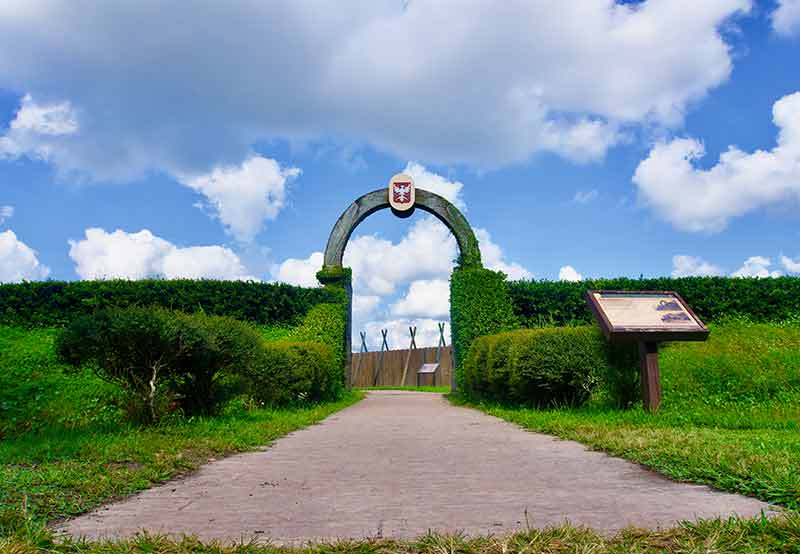
Fort Caroline National Memorial, located on the St. Johns River’s southern bank, commemorates the short French colonial presence in 16th-century Florida.
The Spanish conquered and demolished the original Fort Caroline, replacing it with their own.
The French later burned it down, but it was rebuilt by the Spanish and abandoned permanently within a year.
The fort’s exact location is unknown, and the memorial is now managed as part of the Timucuan Ecological and Historic Preserve as a single unit by the National Park Service.
Things to Do
- Ribault Monument
The Ribault Monument is a monument marker located on a high bank above the St. Johns River that marks the location where the French disembarked their ships in 1562 to claim Florida for France.
- Spanish Pond
The battle between the French and the Spaniards took place around the Spanish Pond.
It is even possible that Spanish soldiers camped here the night before storming Fort de la Caroline in 1565.
- Visitor Center
Brush up on history by viewing the exhibits from the time of the indigenous Timucuans and periods of French, Spanish and British dominance.
- Nature Trail
A nearby nature trail provides a close look at the surrounding ecosystem of saltmarsh and hardwood forest, as it might have been when the first Europeans arrived.
How To Get To The Park
The park is near the intersection of Monument Road and Fort Caroline Road, about 14 miles (23 km) east of Downtown Jacksonville. You can also access it through the St. John’s River Ferry.
11- Fort Matanzas National Monument
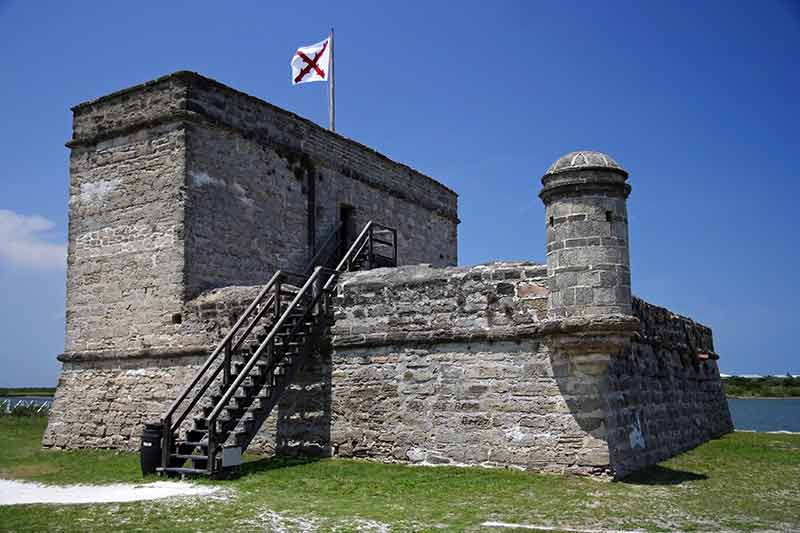
The 228 acres (92 ha) Fort Matanzas National Monument protects a coastal ecosystem of dunes, marshes and maritime forest 15 miles (24 km) south of St. Augustine.
The park’s main attraction, Fort Matanzas, is a masonry fort built by the Spanish between 1740 and 1742 to protect the Matanzas Inlet from British and other enemy attacks.
The fort was only used once, in 1742, when British ships attempted to enter the inlet but were forced into retreat because of the cannon-resistant walls of the fort, made of coquina stone.
These days, the fort is a monument of the early Spanish empire in the south of the USA.
Things to Do
- Tour the Fort
Rangers at the fort hold reenactments and living history displays regularly to help you learn about the fort’s history and the park’s nature and culture.
- Explore the Park
Relax and enjoy a picnic on the park’s unspoilt beach or walk around the park to explore the Matanzas Inlet.
- Nature Trail
Fort Matanzas has a lovely half-mile boardwalk trail that winds through a maritime coastal forest.
How To Get To The Park
Fort Matanzas is located about 14 miles (22.5 km) south of Saint Augustine on State Route A1A.
If you love exploring national parks, you might like to read:
- Wyoming National Parks Guide
- Nevada National Parks Guide
- Michigan National Parks Guide
- 5 Maine National Parks
- New Hampshire National Parks Guide
- 25 National Parks in Canada
- 17 National Parks in Argentina
- Tasmania National Parks
- 20 National Parks in Mexico
- 18 New Mexico National Parks
- 18 National Parks in Massachusetts
- 17 Colorado National Parks
- 4 Indiana National Parks
- 5 Nebraska National Parks
- 30 Virginia National Parks
- 9 New Jersey National Parks
- 8 National Parks in Arkansas
- 8 Alaska National Parks
- 13 Tennessee National Parks
- 6 National Parks in Louisiana
- 5 Illinois National Parks
- 7 National Parks in Oklahoma
- 7 National Parks in South Dakota
- 12 Alabama National Parks
- 5 North Dakota National Parks
- 8 National Parks in West Virginia
- 20 National Parks in Arizona
- 11 National Parks In Florida
- 8 Hawaii National Parks
- 6 National Parks In Idaho
- Texas National Parks Guide
- 9 California National Parks
- 11 National Parks In Georgia
- 7 National Parks In Missouri
- 5 National Parks in Minnesota
- 7 National Parks In Kentucky
- 8 National Parks In Montana
- 15 National Parks In Washington State
- 8 South Carolina National Parks
- 12 North Carolina National Parks
- 4 Wisconsin National Parks
- 20 National Parks In India
- 11 Oregon National Parks
- 5 Connecticut National Parks
- 27 National Parks In New York State
- 4 Iowa National Parks
- Yosemite National Park
- Zion National Park
- 21 National Parks in Pennsylvania
- 9 National Parks in Mississippi
- 5 National Parks in Rhode Island
- 9 National Parks in Taiwan
- 20 East Coast National Parks
- Guide To Winter in Yellowstone National Park
Plan Your Trip

Rent A Car – Find the best car rental rates at Discover Cars. They compare car hire companies to provide you with the best deal right now.

Find A Hotel – If you’re curious about this article and are looking for somewhere to stay, take a look at these amazing hotels.





